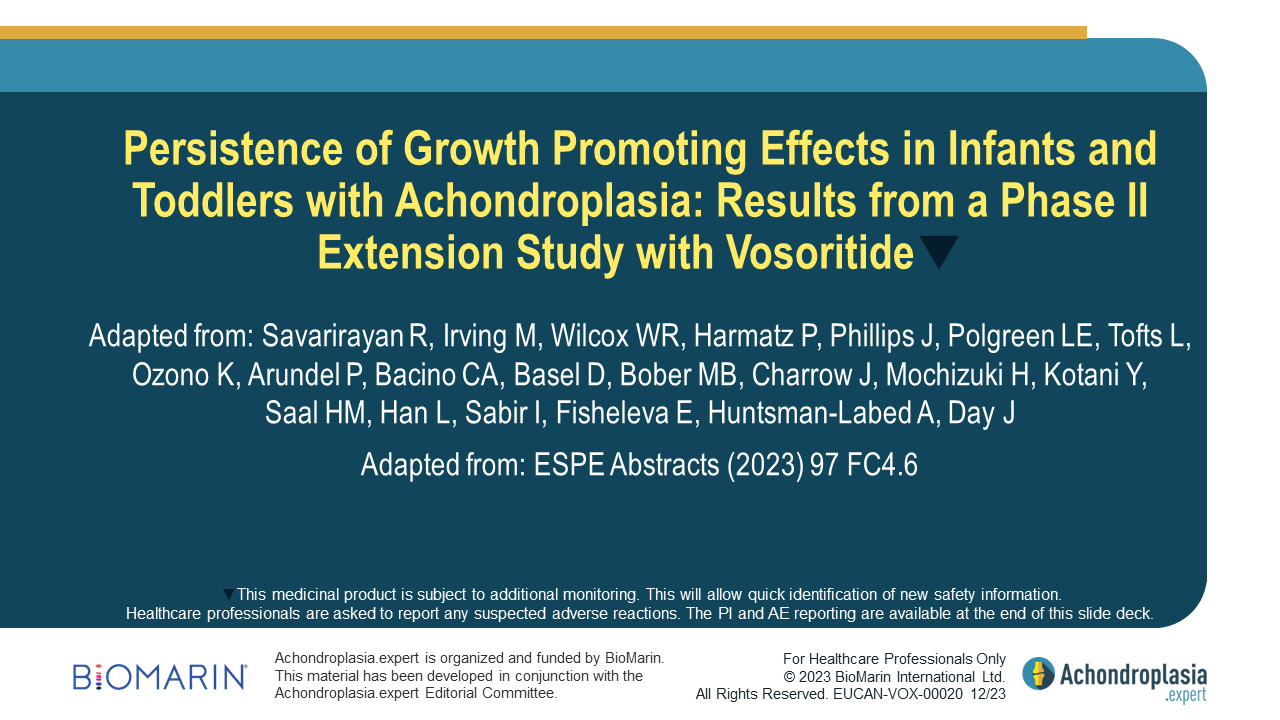Description
Results from a Phase II Extension Study with Vosoritide▼
Vosoritide was well tolerated and maintained positive effects on linear growth over time in patients with achondroplasia (ACH).
ACH is the most common form of disproportionate short stature, caused by a pathogenic variant in FGFR3 that leads to impaired endochondral bone growth and multiple complications. CNP down-regulates aberrant FGFR3 signalling in chondrocytes by inhibiting the MAPK-ERK pathway. Vosoritide is a targeted therapy for ACH, based on naturally occurring CNP and engineered to resist degradation and increase the half-life.
111-206 was a Phase 2, 52-week, randomised, double-blind, placebo-controlled study of children with ACH aged ≤5 years. Patients from 111-206 could enter 111-208: an ongoing Phase 2 open-label extension study. Primary objectives were to evaluate safety and tolerability of vosoritide in children with ACH, and the effect on height/body length Z-scores. Comparative cross-sectional analyses performed for each year of follow-up based on available data using two independent external controls: observational/placebo data from 111-901, 111-301, and 111-206 vosoritide trials, and external CLARITY natural history dataset. Results were analysed by age cohort at treatment start. 34 participants started vosoritide in study 111-206 or 111-208 between ages 2–5 years
Daily injections of vosoritide were well tolerated with no treatment limiting adverse AEs. No new safety issues were also observed in these young children receiving vosoritide for up to 4 years. With the most common AEs observed being mild and self-limiting injection-site reactions. There was persistence of growth promoting effects of vosoritide in children who started treatment before age 5.

References:
Savarirayan R, Irving M, Wilcox WR, Harmatz P, Phillips J, Polgreen LE, Tofts L, Ozono K, Arundel P, Bacino CA, Basel D, Bober MB, Charrow J, Mochizuki H, Kotani Y, Saal HM, Han L, Sabir I, Fisheleva E, Huntsman-Labed A, Day J
ESPE Abstracts (2023) 97 FC4.6
